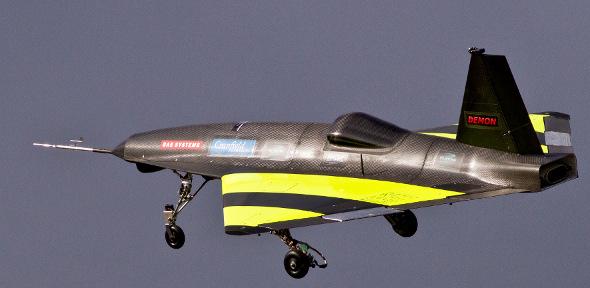
Cambridge and Cranfield Universities are at the heart of a £16 million government initiative to boost the use of robotics in UK industry. The research project is a government-industry-academic partnership designed to develop smart machines that think for themselves.
Robotics and autonomous intelligent systems are areas of science in which the UK has world class expertise, but to reap the full benefits for the economy and society we need to get better at applying the technology to industry.
David Willetts, Universities and Science Minister
The research brief includes safe ways of monitoring in dangerous environments such as deep sea installations and nuclear power plants, ‘nursebots’ that assist patients in hospitals, and aerial vehicles that can monitor national borders or detect pollution.
Universities and Science Minister, David Willetts, revealed that 22 exciting university-based research projects in the UK were being backed.
Led by the Engineering and Physical Sciences Research Council (EPSRC) and an eight-strong group of partners, the investment has over £4 million in support from industry itself.
This will include access to specialist laboratories, equipment, expertise and advice on commercialisation and industrialisation. The partners are BAE Systems, Schlumberger, National Nuclear Laboratory (NNL), Sellafield Ltd, Network Rail, SCISYS, DSTL and the UK Space Agency.
Robotics research and the development of intelligent autonomous systems, such as unmanned aircraft, are vital to many major UK companies, emerging industries, and SMEs, from advanced manufacturing to oil and gas exploration, nuclear energy to railways and automotive, healthcare to defence.
Autonomous and intelligent systems are capable of independent action in dynamic, unpredictable environments. They interact with each other and humans, using sensors to learn from their environment, adapting their behaviour and making choices based on their immediate and stored knowledge and experiences.
David Willetts said: “Robotics and autonomous intelligent systems are areas of science in which the UK has world class expertise, but to reap the full benefits for the economy and society we need to get better at applying the technology to industry.
“This £16 million investment will bring together leaders from the research base and business to develop systems for a range of important sectors, from transport to aerospace. In addition, I have asked EPSRC, the Royal Academy of Engineering and the Technology Strategy Board to organise a roundtable to discuss the future of UK research in this area.”
Cambridge University’s input, led by Dr Carl Rasmussen and colleagues in the Department of Engineering, addresses ‘autonomous behaviour and learning in an uncertain world.’
Cambridge’s submission to the EPSRC says: “Our proposed framework will enable significant progress to be made in a large number of areas essential to intelligent autonomous systems.
“We aim to build on our expertise in Bayesian machine learning, multi-agent systems and control theory and by drawing together closely related developments in these complementary fields we will be able to make substantial improvements to the way artificial agents are able to learn and act, combine and select data sources intelligently, and integrate in robust ways into complex environments with multiple agents and humans in the loop.”
Cranfield University is extending research in novel sensing, e-maintenance systems, and decision-making strategies. The integration of sensor-based information in geographically dispersed and less structured environments poses challenges in technology and cost justification which will be addressed for rail, aerospace and industrial applications.
Cranfield has already demonstrated its importance to this field of research. It helped develop DEMON, a novel unmanned air vehicle (UAV) which showcases a wide range of new technologies and has successfully demonstrated ‘flapless flight.’

